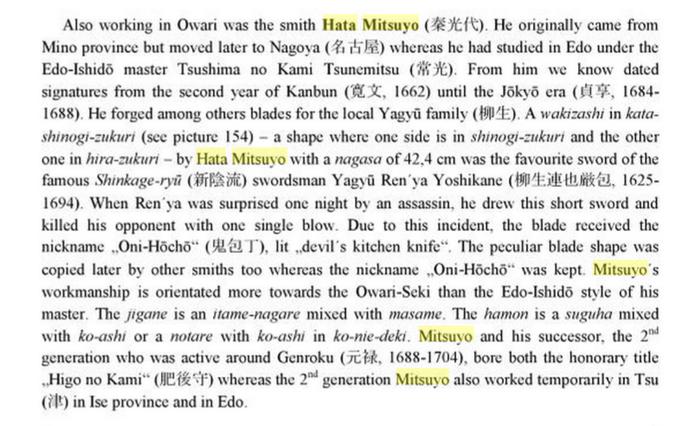Results 31 to 40 of 433
-
09-05-2015, 01:48 AM #31

Arsenico - any help you could give to translating the Kanji on these four pieces of ancient Tamahagane steel in the thread below, been trying to get a translation for awhile - much thanks if you can.
There are four pieces of the nakago section of four different Japanese swords.
http://straightrazorpalace.com/custo...ml#post1479572
-
09-05-2015, 02:09 AM #32Senior Member



- Join Date
- Oct 2010
- Posts
- 26,211
Thanked: 8626
-
09-05-2015, 02:12 AM #33
-
09-05-2015, 04:17 PM #34

Hello.
First of all I forgot to write the reading of this 井上藤助, in post #27 but you should know these kanji now INOUE TOSUKE ...
INOUE TOSUKE ...
So here we have the same group of kanji.
The first strop has 3 more kanji, but basically the whole meaning is the same.
Let's see them in detail
The group of kanji in blue are the one on lz6's strop and not on sharptonn's one
耐水研磨仕上 検定所 検査済
耐水 (TAISUI) water resistant, waterproof
研磨 (KENMA) grinding, polishing
仕上 (SHIAGE) finishing, final touch
検定所 (KENTEIJO) inspection centre, official certification centre
検査済 (KENSAZUMI) test finished, final inspection
So trying to give a meaning to all of this:
Finishing strop, water resistant, approved by an official inspection center (or something like that..)
Hope this helps.
I also wanted to thank you all for the kind words.
And again, it is my pleasure to help. This is a big chance to learn something new also for me!
-
-
09-05-2015, 04:55 PM #35

Reading those kanji has been difficult also for some of my japanese friends.
But I have something interesting for you:
This is the name of a sword maker of the 1600. Hata Mitsuyo 秦光代。Some informations are available googling his name. There is also something on google books
Hope this helps.
-
The Following User Says Thank You to Arsenico For This Useful Post:
Phrank (09-05-2015)
-
09-05-2015, 05:27 PM #36

Of the 1600's, so the that piece of tamahagane steel is over 400 years old! Amazing, truly amazing.
Thank-you!
Yes, so this is the guy then, Hata Mitsuyo, and, "he originally came from Mino province but moved later to Nagoya whereas he had studied in Edo under the Edo-Ishido master Tsushima no Kami Tsunemitsu. From him we know dated signatures from the second year of Kanbun (1662) until the Jokyo era (1684-1688)."
The last three symbols of the Kanji are identical to Kanji in pic #3 from Bruno's post, here is a pic of Hata Mitsuyo's work and his signature on another piece (link added):
http://nihonto.us/HATA%20MITSUYO%20KATANA.htm

Last edited by Phrank; 09-05-2015 at 06:18 PM.
-
09-05-2015, 06:05 PM #37
-
-
09-05-2015, 06:08 PM #38
-
The Following User Says Thank You to Phrank For This Useful Post:
sharptonn (12-02-2015)
-
09-05-2015, 06:23 PM #39
-
The Following User Says Thank You to Phrank For This Useful Post:
sharptonn (12-02-2015)
-
09-05-2015, 06:56 PM #40Senior Member



- Join Date
- Oct 2010
- Posts
- 26,211
Thanked: 8626


 378Likes
378Likes LinkBack URL
LinkBack URL About LinkBacks
About LinkBacks









 Reply With Quote
Reply With Quote





